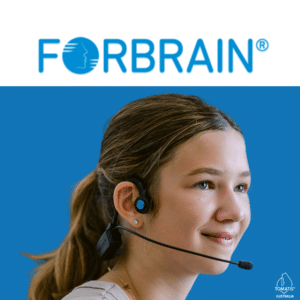When someone loses mobility in their legs, for example, they go through physiotherapy, which basically helps strengthen that weak muscle. But what happens when your brain doesn’t make sense of numerical operations, such as the case in dyscalculia, or switch up words, like in cases of dyslexia? What do you do then? When you face learning difficulties, ear-brain training can improve memory and thus help you with managing the symptoms of your learning disabilities.
The connection between our ears and brain is more powerful than most people realise. And for children struggling with learning disabilities, this connection might just be the key to unlocking their potential. In this article, we will see how ear-brain training improves memory in children with learning disabilities.
Understanding the Ear-Brain Connection
Your ears don’t just hear sounds – they’re actually processing centres that work hand-in-hand with your brain. Think about it this way: when you hear someone speaking, your ears pick up the sound waves, but it’s your brain that makes sense of those sounds and turns them into meaningful words. In fact, sometimes, parents are sometimes surprised to learn that learning difficulties can stem from auditory processing issues rather than intelligence or effort levels.
But what happens when this system isn’t working as smoothly as it should? For children with learning disabilities like dyslexia, dyscalculia, or attention difficulties, this ear-brain connection often needs some extra support.
Research shows that many children with learning disabilities also experience challenges with auditory processing. Students with auditory processing deficits frequently scored lower in language arts and math, as they found it challenging to process and retain spoken instructions. This isn’t about hearing problems in the traditional sense – these children can hear perfectly well. Instead, it’s about how their brain interprets and remembers what they hear.
The Science Behind Memory and Learning
Memory isn’t just one thing – it’s actually made up of several different systems working together. Working memory, in particular, is crucial for learning. It’s like your brain’s temporary workspace where you hold and manipulate information.
The research provides substantial evidence of poor performance in verbal and executive working memory tasks in children with learning disabilities. The studies support the hypothesis that working memory can improve with training.
When children struggle with learning disabilities, their working memory often needs extra support. And here’s where the ear-brain training comes in – by strengthening the auditory processing pathways, we can actually help improve overall memory function. Addressing learning difficulties early in a child’s development can prevent years of academic struggle and emotional stress down the track.




